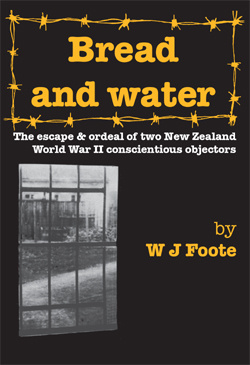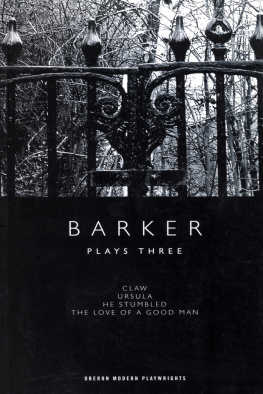P rincetown and the
C onscientious O bjectors
of WW1
Pip Barker
Austin Macauley Publishers
2021-06-30
Princetown and the
Conscientious Objectors
of WW1
About the Author
Pip Barker started working life as a teacher in a comprehensive school and later moved on to work for social services as a care home manager and later as an inspector of care homes under the Quality Care Commission. He has now retired.
Pip has always taken a keen interest in local history and has linked this with collecting postcards and other ephemera. His first visit to Princetown came as a result of discovering that his great-grandfather was a warder at the prison.
Following his move to Dartmoor in 2014, he quickly became involved with the Dartmoor Prison Museum and undertook responsibility for archiving. Such is his interest that he now delivers talks to local groups on all things related to Dartmoor Prison.
Dedication
To all those who have contributed to our local history and continue to do so.
Copyright Information
Pip Barker (2021)
The right of Pip Barker to be identified as author of this work has been asserted by the author in accordance with section 77 and 78 of the Copyright, Designs and Patents Act 1988.
All rights reserved. No part of this publication may be reproduced, stored in a retrieval system, or transmitted in any form or by any means, electronic, mechanical, photocopying, recording, or otherwise, without the prior permission of the publishers.
Any person who commits any unauthorised act in relation to this publication may be liable to criminal prosecution and civil claims for damages.
A CIP catalogue record for this title is available from the British Library.
ISBN 9781398419780 (Paperback)
ISBN 9781398419810 (ePub e-book)
www.austinmacauley.com
First Published (2021)
Austin Macauley Publishers Ltd
25 Canada Square
Canary Wharf
London
E14 5LQ
Acknowledgement
My thanks to the governor of Dartmoor Prison and the staff of Dartmoor Prison Museum, particularly Brian Dingle and Graham Edmondson, for supporting me with this project and for making available some of the material used in this book. This material included the accounts of Roland and Sidney Reigne, William Ralph Done, Alfred Downs and James Butcher, all Conscientious Objectors at Dartmoor, sections of which I have quoted. My thanks extend to their families who supplied their written accounts to the museum.
I would also like to thank my good friend, David Garner, who undertook to read my work and who offered constructive comments.
Finally, I would like to thank my wife, Gill, for without her support, help and encouragement in this project, this story would have remained untold.
Dartmoor Work Centre
19171919
Introduction
Neither the length of the War nor the tremendous number of casualties was foreseen when the first World War broke out on July 28, 1914.
In the words of many at the time, the prediction was that it would be over by Christmas and volunteers rushed to do their bit in case they were too late to take part. No one realised at the time the military capabilities and weaponry of the German Army which was to cause such devastating numbers of dead and injured. Such were the losses that the British Government could no longer rely on volunteers to fill the dwindling ranks of our own military. By 1916, action needed to be taken, so the Military Service Act was introduced in January of that year. This required that all single men or widowers between the ages of 18 and 41 must enlist. Those that did not fall into this category were free to carry on with their normal everyday life until 25 May when the requirement to enlist was extended to include married men. From this time, the only men in the 1841 age group not to be conscripted were those in reserved occupations.
There were, however, some men who refused to enlist or fight and became known as Conscientious Objectors. By their refusal they were contravening the terms of the Military Service Act.
Provision needed to be made for these men for the duration of the War, and the initial solution was to send them to prisons as common criminals. Later, some were offered the opportunity to live in work camps and carry out work that the government described as of National Importance.
One such work camp proposed was in Princetown, Devon on the site of the former Dartmoor Convict Prison. Originally opened in 1809 to house French prisoners of war from the Napoleonic Wars and later in 1813 American prisoners from the War of 1812, it was a forbidding granite construction 1500 feet above sea level in a very hostile environment. Later in 1850 it became a Convict Prison, housing some of the most dangerous men in the country. All the inhabitants of Princetown relied on Dartmoor Prison for their livelihood. This Act of 1916 was to change the lives of those very people.
Men seeking exemption from military service had to put their case before a tribunal, Tavistock being the nearest one to Princetown. The tribunal consisted of older men, many veterans of the Boer War, and so the COs entreaties were viewed on the whole unsympathetically. A large number were shipped to regiments where they refused to participate in any activity associated with the War. Some refused to put on the uniform and there are many stories of men being marched naked around parade grounds.
Two Conscientious Objectors who eventually ended up at Dartmoor Work Centre, as Dartmoor Prison later became known, were Bernard Bonner, a watchmaker by trade, and Harry Stanton, a bank official and quaker. Both had refused to don uniform and engage in any activities to help the War effort.
Despite being threatened and bullied, they were sent to the Eastern Non-Combatant Corps at Landguard Camp in Felixstowe. Bonner was sentenced to death on 10 June, 1916, but the sentence was commuted immediately to ten years Penal Servitude.
Postcard of Bernard Bonners Army Service Record
Later that year, the Home Office Committee for the Employment of Conscientious Objectors (HOCECO) was set up to undertake Work of National Importance not associated with the War. The work consisted of land reclamation and road building. It was regarded as work that helped local communities rather than the War effort. The first camp setup was in Scotland at Dyce near Aberdeen. This camp only lasted three months due to the appalling conditions where over 250 men lived in tents that had been used in the Boer War some 20 years earlier. The damp and rain made conditions for work in the nearby quarry intolerable, and after a few deaths the camp was closed down.
It was announced in Parliament on Wednesday, 21 February, 1917, by Sir George Cave, Secretary of State for the Home Department, that:
Dartmoor Prison shall cease to be used as a prison, and shall be handed over for the duration of the War to the HOCECO. The men who will be sent there by the committee will be employed on the large farm attached to the prison, and on the reclamation for agricultural purposes of neighbouring portions of Dartmoor. The men will live and work under conditions similar to those in force at the committees establishments at Wakefield and Warwick. It is hoped that the buildings may be ready for the reception of the Conscientious Objectors in about a fortnights time. It is intended that the building should revert to the purpose of a prison after the War. (COs Hansard No 20, March 1, 1917).












